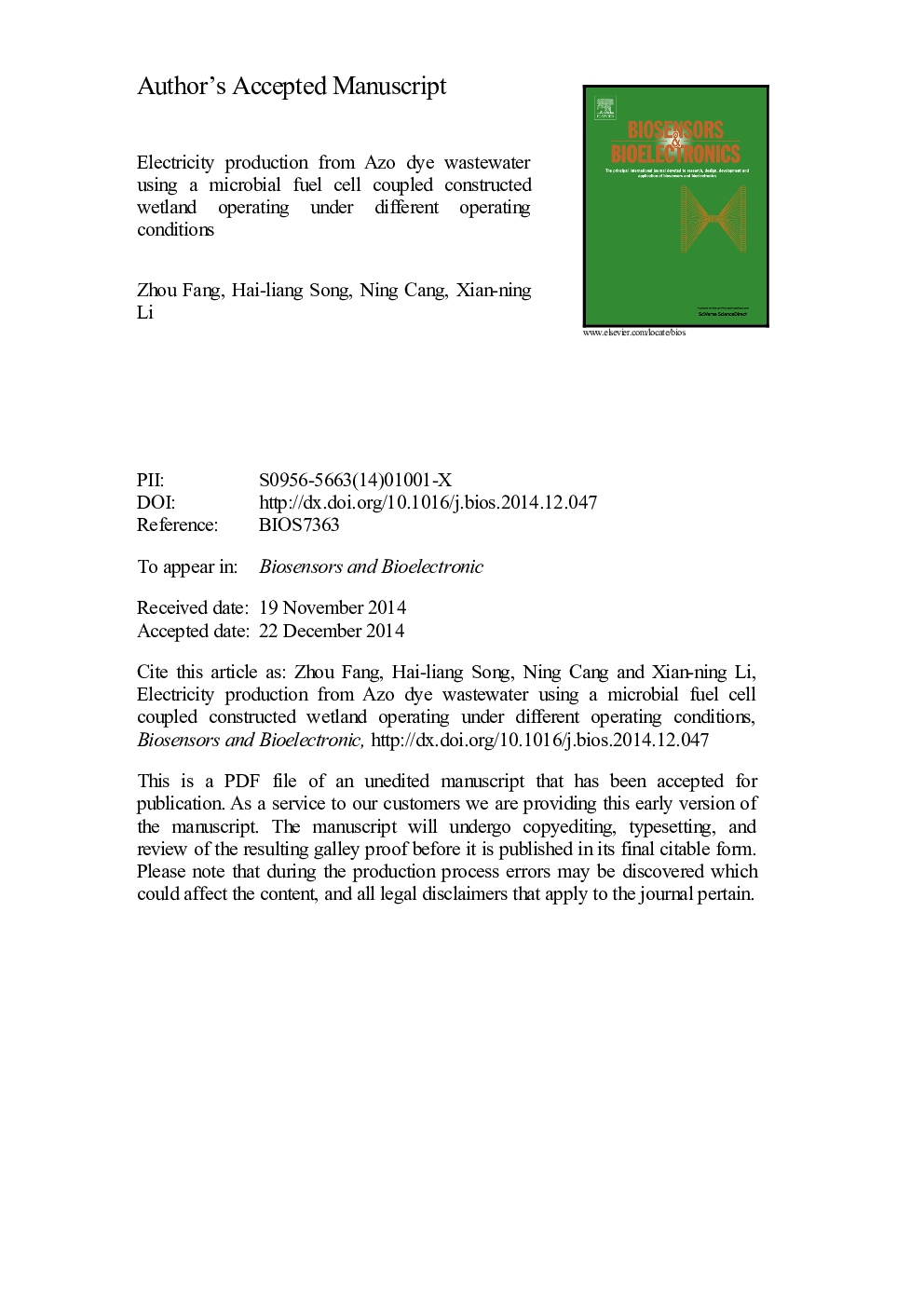| کد مقاله | کد نشریه | سال انتشار | مقاله انگلیسی | نسخه تمام متن |
|---|---|---|---|---|
| 7232338 | 1644974 | 2015 | 29 صفحه PDF | دانلود رایگان |
عنوان انگلیسی مقاله ISI
Electricity production from Azo dye wastewater using a microbial fuel cell coupled constructed wetland operating under different operating conditions
ترجمه فارسی عنوان
تولید برق از فاضلاب رنگ آمیزی آزو با استفاده از یک سلول سوختی میکروبی همراه با تالاب ساخته شده تحت شرایط مختلف عملیاتی
دانلود مقاله + سفارش ترجمه
دانلود مقاله ISI انگلیسی
رایگان برای ایرانیان
کلمات کلیدی
سلول های سوختی میکروبی، تالاب ساخته شده، توزیع الکترونی، رنگ آزو، رنگ زدایی، عوامل تاثیرگذار،
موضوعات مرتبط
مهندسی و علوم پایه
شیمی
شیمی آنالیزی یا شیمی تجزیه
چکیده انگلیسی
Microbial fuel cells (MFCs) have got tremendous attention for their capability to enhance the degradation of some recalcitrant pollutants and simultaneous electricity production. A microbial fuel cell coupled constructed wetland (CW-MFC) is a new device to treat the wastewater and produce energy which has more wastewater treatment volume and more easily to maintenance than others MFCs. The studies on the performance of CW-MFCs are necessary. In this work, the effects of hydraulic residence time (HRT), reactive brilliant red X-3B (ABRX3) proportion and COD concentration on the electricity production of CW-MFC and the degradation characteristics of ABRX3 were investigated. The decolorization rate and the electricity production increased to a peak before slowing down with the elongation of HRT. The highest decolorization rate and electricity production were obtained when HRT was 3 days. The ABRX3 proportion (calculated as COD) in the wastewater played an important role in decolorization and electricity production, which may influence the distribution of electrons in the system. The power density of CW-MFC and the decolorization rate decreased concomitantly with an increasing ABRX3 proportion. The COD concentration influenced the CW-MFC performance slightly. The highest decolorization rate and power density reached 95.6% and 0.852Â W/m3, respectively, when the COD concentration was 300Â mg/L while the ABRX3 proportion was 30%. The coulombic efficiency of the CW-MFC depended on glucose and ABRX3 proportions in the wastewater. ABRX3 acquired more electrons than the anode. Further investigations are needed to optimize CW-MFC performance and explain the mechanism of biorefractory compounds degradation and electron motion in CW-MFCs.
ناشر
Database: Elsevier - ScienceDirect (ساینس دایرکت)
Journal: Biosensors and Bioelectronics - Volume 68, 15 June 2015, Pages 135-141
Journal: Biosensors and Bioelectronics - Volume 68, 15 June 2015, Pages 135-141
نویسندگان
Zhou Fang, Hai-liang Song, Ning Cang, Xian-ning Li,
